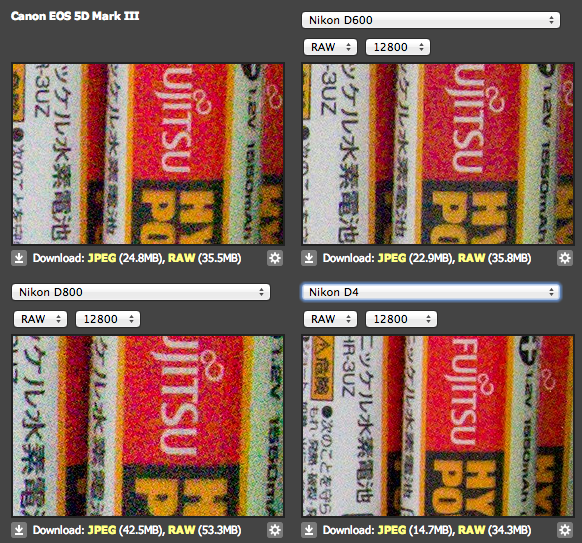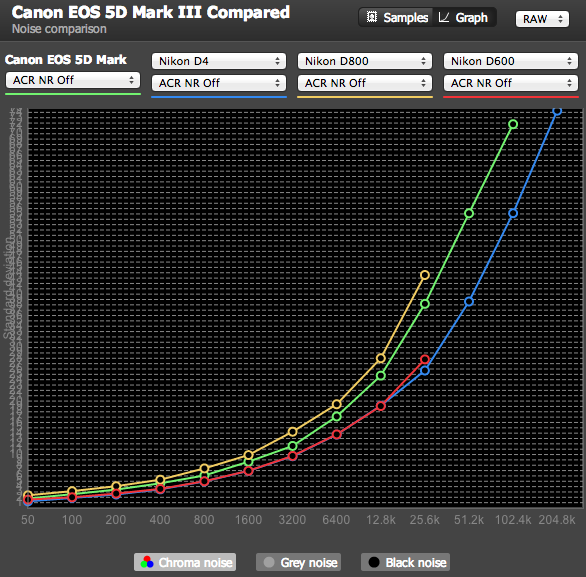Very interesting. While instead Canon decided that 16 beautiful bits per pixel, to stick to your example, would be preferable. Hence, Nikon D800 and Canon 5DIII . Do I understand correctly what you're saying?
Kinda, sorta, maybe. Since we're talking about the 5DIII, it's actually 22 megapixels. Nikon offers the D600, with a 24 megapixel sensor (allegedly from Sony) and the D800 with a 36 megapixel sensor (allegedly home grown).
If you use the DPReview Compare-o-Tron-2000, go for the raw mode comparison at ISO 12800 and bring up the 5DIII, D600, and D800. This is enough for you to have a good look at the noise. I tend to like looking at the Fujitsu batteries in the lower-left corner.

You can also have a look at their measured numbers.

What you see is that the D800 has slightly worse noise but big buckets of extra resolution. If you scaled it down, you'd probably be in very good shape. The D600 is very close to the 5DIII in resolution, and the D600 slightly beats the 5DIII in noise. I tossed in the much pricier Nikon D4, which is a great example of "16 beautiful bits per pixel" (the sensor is 16 megapixels -- the smallest in the bunch here). Again, if you shrank down the D800, you'd probably come out about the same as the D4; somebody must have tried this experiment, but I'm not really sure. On the flip side, the D800 raw file is 53MB while the D4 raw file is 34MB. If you don't want the super-high-resolution, the D4 would seem to have an advantage.
Lastly, for what it's worth,
DxOMark seems to think that the D800 is the best sensor they've ever measured.

